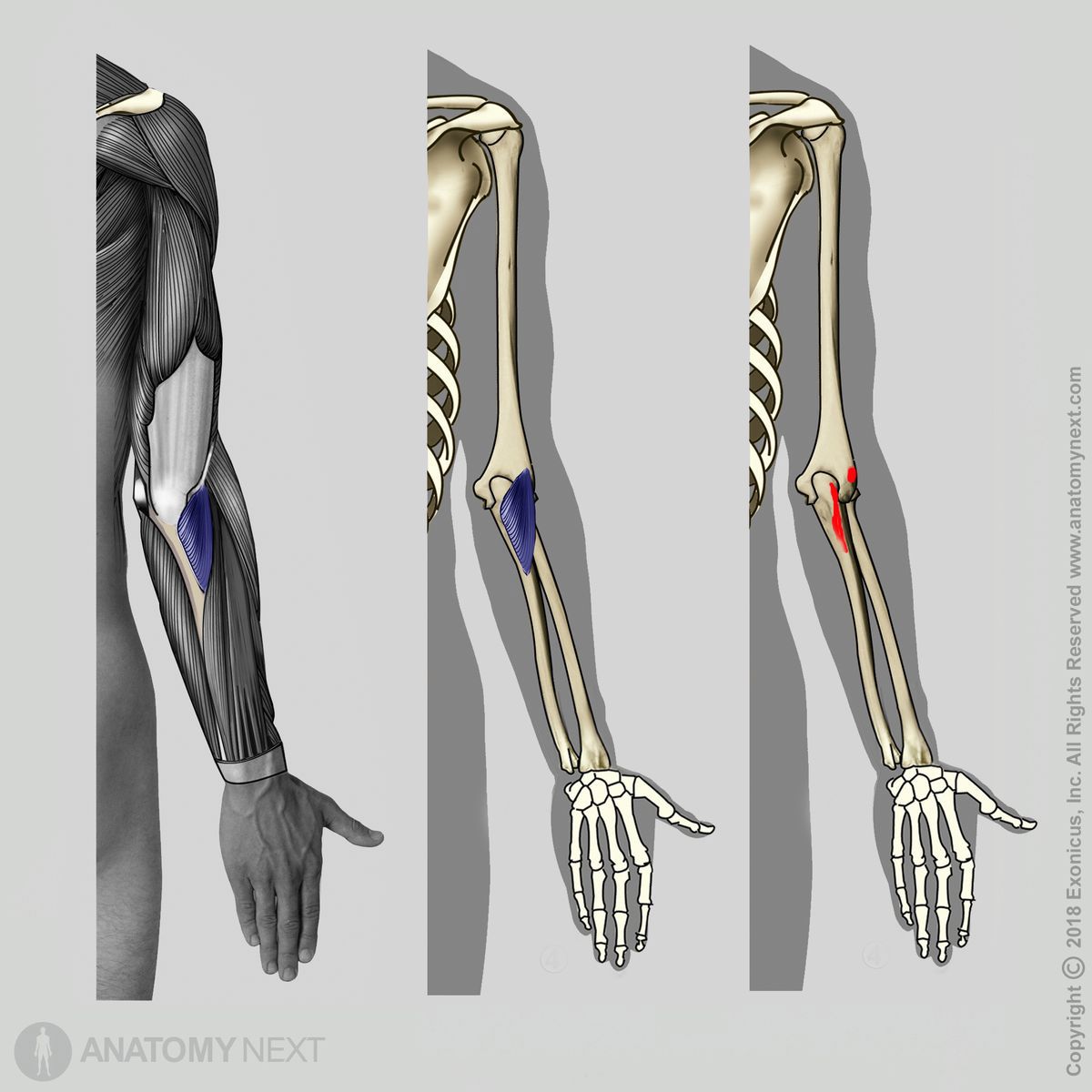- Anatomical terminology
- Skeletal system
- Joints
- Muscles
- Head muscles
- Neck muscles
- Muscles of upper limb
- Muscles of pectoral girdle
- Muscles of shoulder region
- Muscles of upper arm
- Anterior compartment
- Posterior compartment
- Muscles of forearm
- Muscles of hand
- Thoracic muscles
- Muscles of back
- Muscles of lower limb
- Heart
- Blood vessels
- Lymphatic system
- Nervous system
- Respiratory system
- Digestive system
- Urinary system
- Female reproductive system
- Male reproductive system
- Endocrine glands
- Eye
- Ear
Anconeus
The anconeus (Latin: musculus anconeus) is a small, pyramidal-shaped muscle of the upper limb. It stretches between the distal humerus and proximal ulna. The anconeus is located in the posterior compartment of the upper arm together with the triceps brachii muscle. It is one of the forearm extensors.
| Anconeus | |
| Origin | Lateral epicondyle of humerus |
| Insertion | Proximal end of ulna, lateral surface of olecranon |
| Action | Extension of forearm |
| Innervation | Radial nerve (C7 - C8) |
| Blood supply | Posterior interosseous artery |

Origin
The anconeus muscle originates from the lateral epicondyle of the humerus.

Insertion
The anconeus inserts on the proximal end of the ulna and lateral surface of the olecranon.
Action
The primary function of the anconeus muscle is the extension of the forearm at the elbow joint.
Innervation
The anconeus is innervated by the radial nerve (C7 - C8) - a branch of the brachial plexus.
Blood supply
The anconeus muscle receives arterial blood supply from the posterior interosseous artery that is a branch of the common interosseous artery.